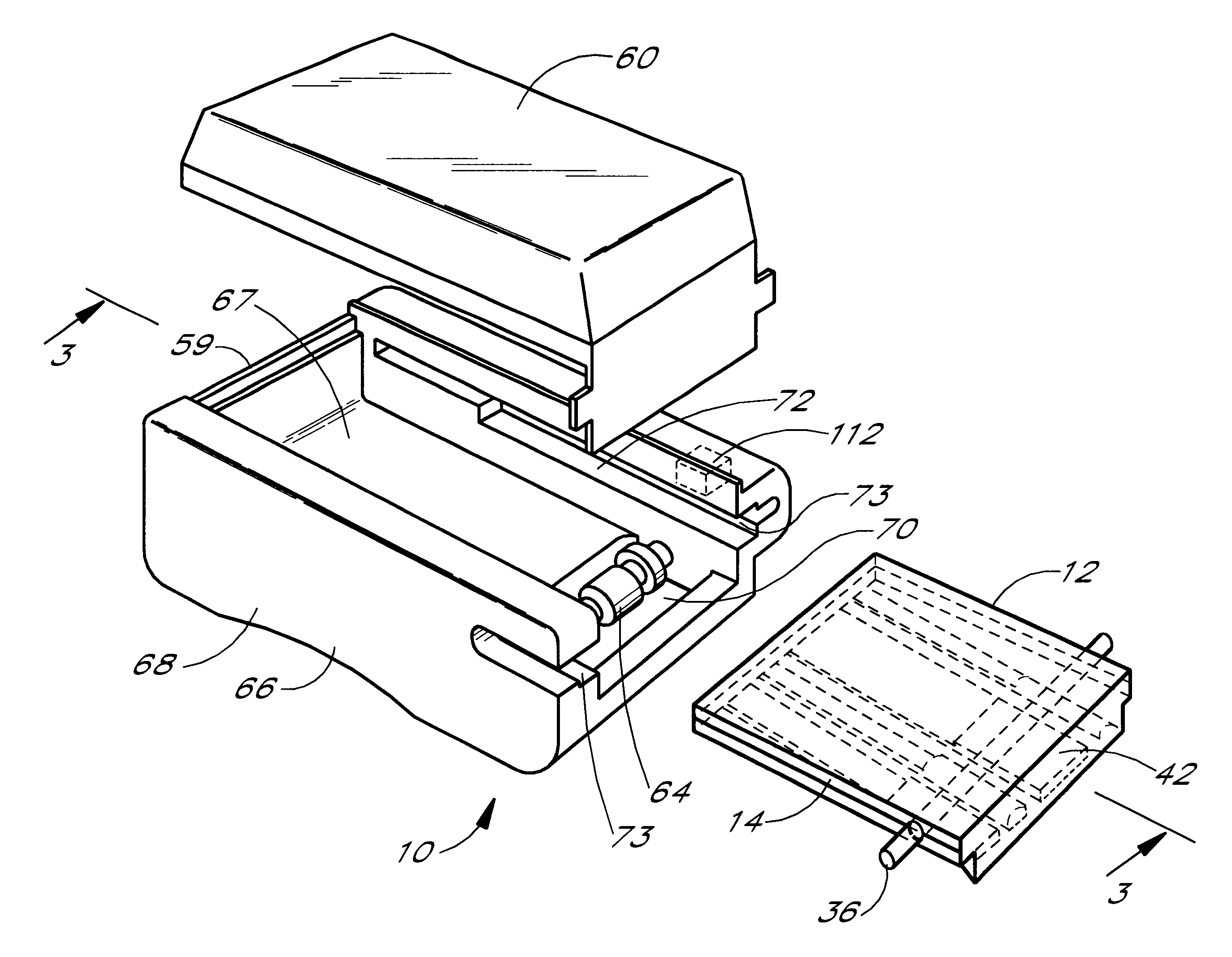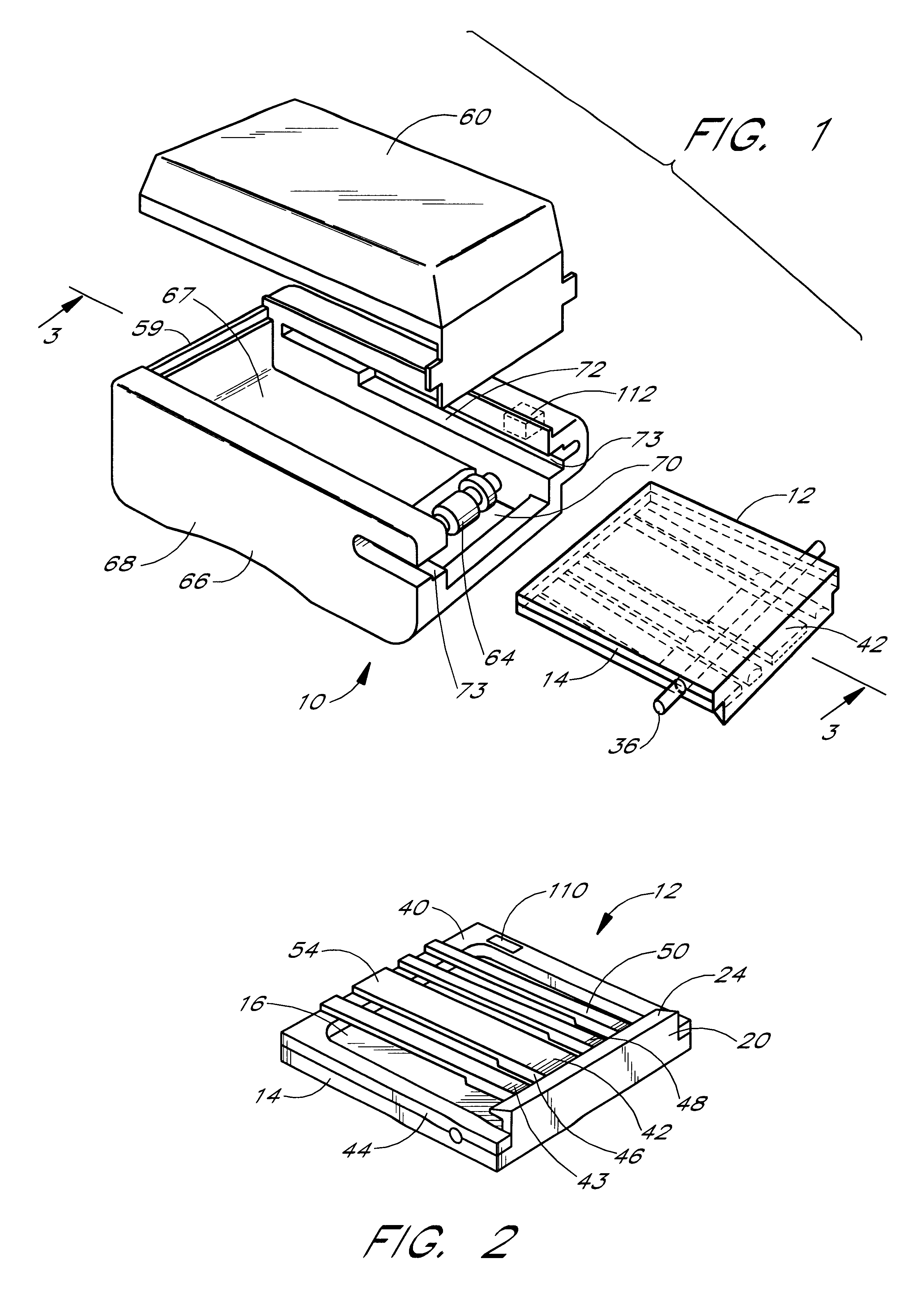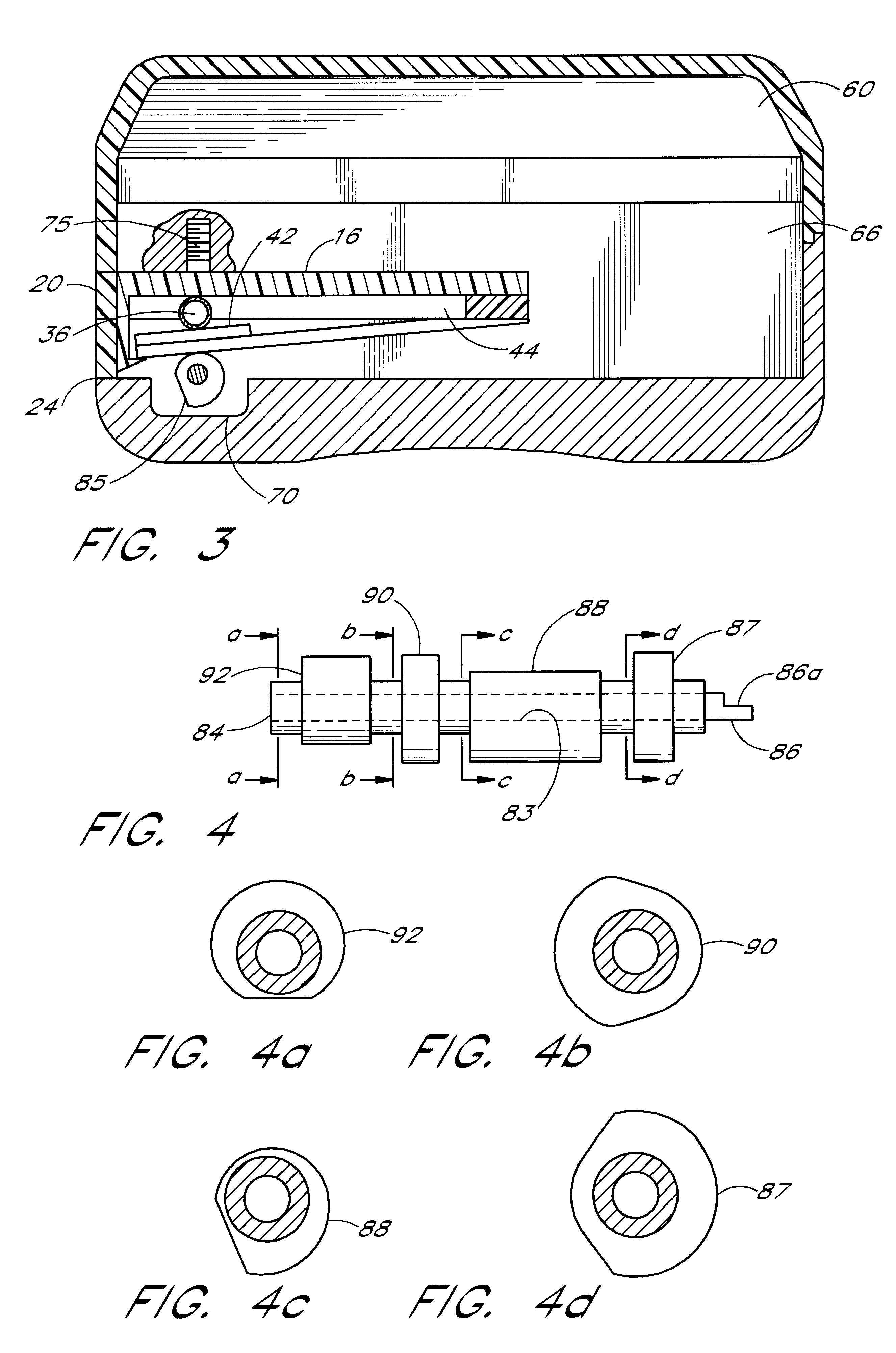Since the cam followers are instrumental in controlling the amount of fluid dispensed, the thickness of the cam followers is a
critical dimension which directly affects the degree of tube compression, and thus the cross sectional area of the delivery tube. Because some variations in thickness can be expected from one molded part to the next due to normal molding process variations, the invention utilizes gap correction spacers which counteract these thickness variations. The gap correction spacers fit between the plate and the support for the rotating cam, and thus adjust the distance between the cam and the plate. If the
cam follower assembly varies in thickness, for example due to change in the pressure of an
injection molding machine, both the cam followers and the gap correction spacers vary by the same amount, because they are molded as a single unit. Since an increase in thickness of the gap correction spacers results in an increase in the delivery tube gap, while an increase in the thickness of the cam followers results in a decrease in the delivery tube gap, the net effect is no change in the delivery tube gap. It is this
correction technique that allows the followers to be injection molded without sacrificing the accuracy of the fluid delivery.
An additional feature of the invention allows the use of a low cost molded pressure plate assembly. Springs are used to force the face of the tubing
retainer plate against the gap correction spacers. These springs, of course, must be stiff enough to be unyielding as the cams squeeze the delivery tube. By floating the plate on such springs, changes in thickness from plate to plate due to molding variations do not change the tubing gap from part to part. This is another important part of the invention which allows an easily loaded and inexpensive disposable administration set to be used without sacrificing performance or accuracy.
The plate referencing
system and the gap correction spacers described above are adapted to increase the accuracy of the
delivery system. In cooperation with the gap correction spacers, a channel in the pumping
system receives the
retainer plate and the spacers. The springs mentioned above are mounted in this channel and force the disposable assembly against a reference shoulder within the channel. This shoulder allows an easily manufactured
dimensional precision to accurately define the tubing gap. The critical dimensions are the cam
radius itself and the distance between the cam axis and the plate referencing shoulder. These two dimensions can be precisely controlled in the manufacturing process and they will not change significantly with time or usage.
The present invention utilizes two pumping cams and two pumping cam followers, which function such that, at any point in time, one of the two pumping cams is always pumping. The two pumping cams comprise a primary pumping cam associated with an upstream segment of the delivery tube and a secondary pumping cam associated with a downstream segment of the delivery tube. The primary pumping cam is wider than the secondary pumping cam, so that it can displace sufficient fluid during its pumping
stroke to deliver fluid external to the pump and at the same time deliver fluid to the section of the tubing beneath the secondary pumping cam to allow it to fill. The secondary pumping cam is narrower, since it only needs to deliver fluid external to the pump. The present invention additionally utilizes pinching cams and pinching cam followers, which open and close the delivery tube to allow the pumping action to function properly. The pinching cams comprise an inlet pinching cam associated with the upstream segment of the tube and an outlet pinching cam associated with the downstream segment of the tube. Thus the pumping cam followers, acted upon by the pumping cams, control the rate of fluid flow, while the pinching cam followers acted upon by the pinching cams, operate as valves for the pump. Such a configuration allows one segment of the delivery tube to fill with fluid while another segment of the delivery tube is pumping, thus providing a continuous and uniform fluid flow.
The present invention uses a minimal number of parts and dissipates a minimal amount of energy. The disposable concept which includes the cam followers and the pressure plate allows for a high precision pump without complicated assembly or loading mechanisms. The set loading and retaining channels allow precise positioning of the tubing, followers, and pressure plate without any adjustments or complicated, bulky, or expensive mechanisms. The disposable administration set results in an overall fluid
delivery system which is small, lightweight, and
ambulatory.
The design of the disposable administration set in combination with the plate referencing channels allows a sliding operation in order to load the set. This sliding operation allows for the transfer of information from the disposable administration set to the instrument from fixed sensors. These sensors may be optical, magnetic, or some other technology. The preferred embodiment uses optical sensors to read optically coded information from a
label on the administration set. This capability permits the instrument to be programmed from the information included on the
label. The instrument operator is thus free from
programming tasks, which would be difficult in a clinical environment.
Programming information can be added to the administration set during the preparation or prescription of the medication to be delivered. The unique sliding operation makes this
programming simple and cost effective in the present invention.
 Login to View More
Login to View More  Login to View More
Login to View More 


